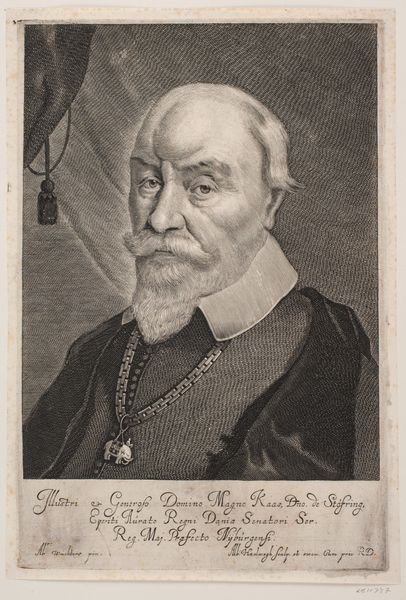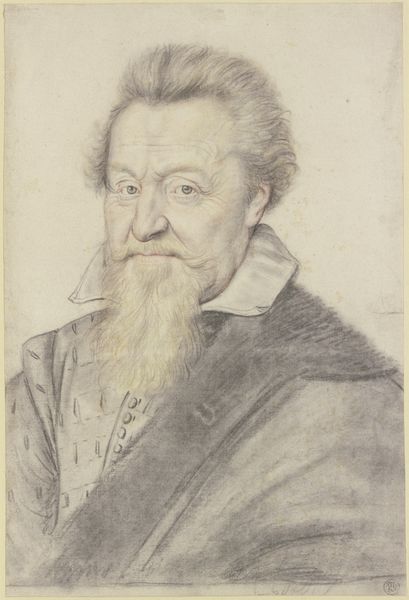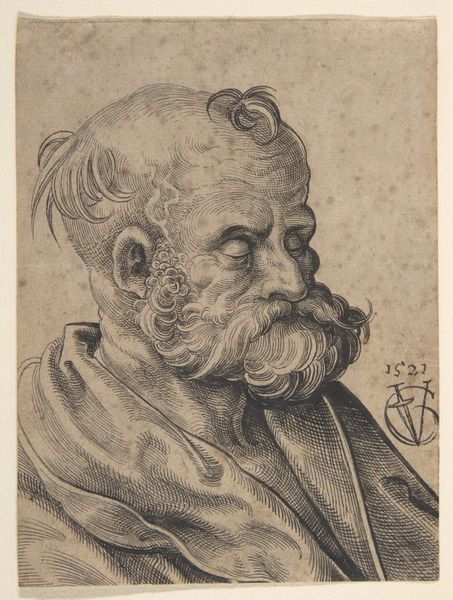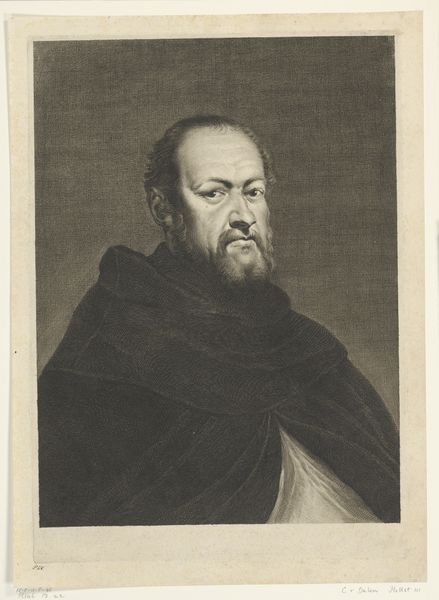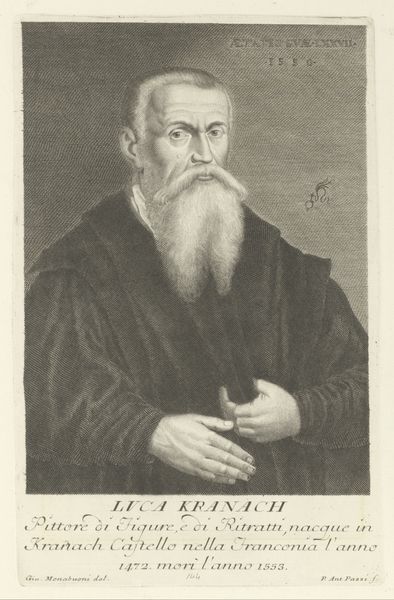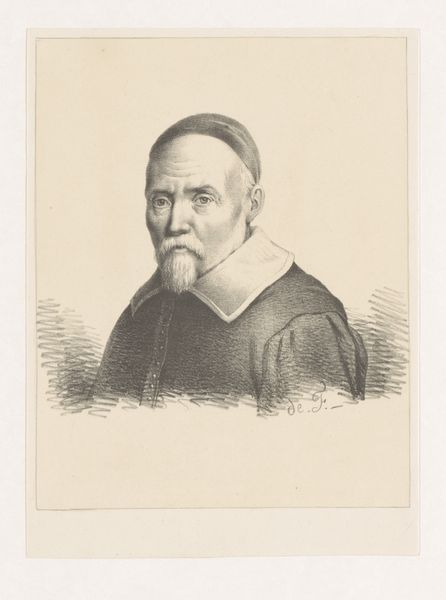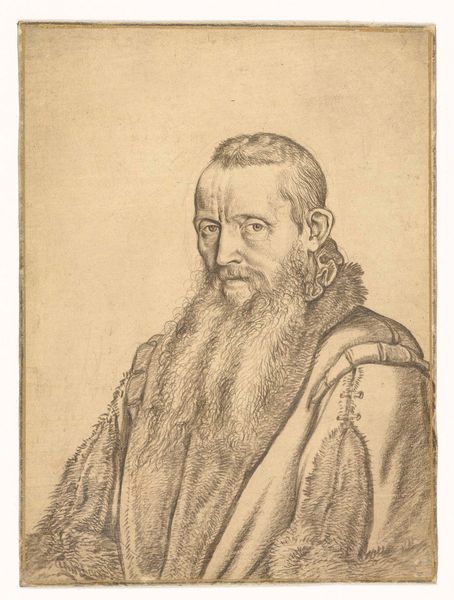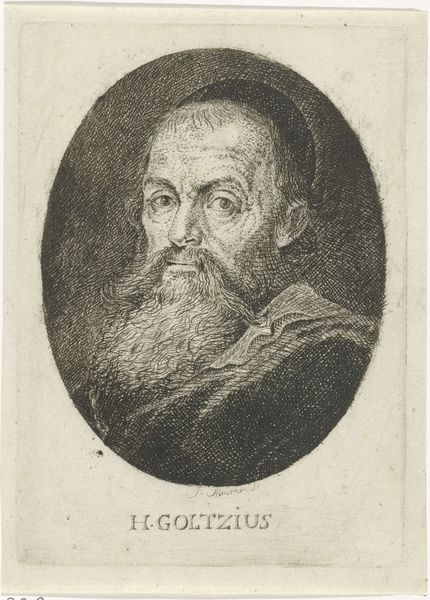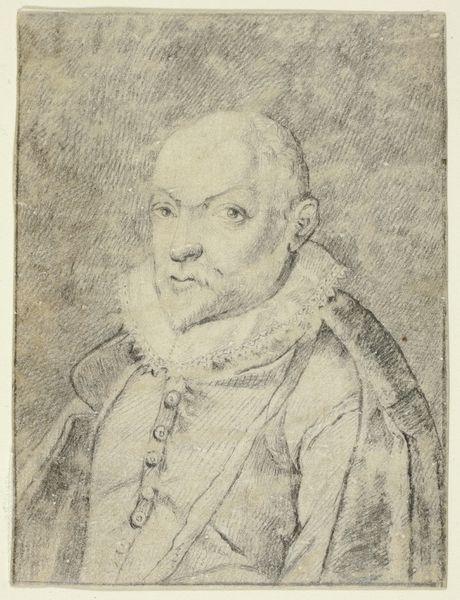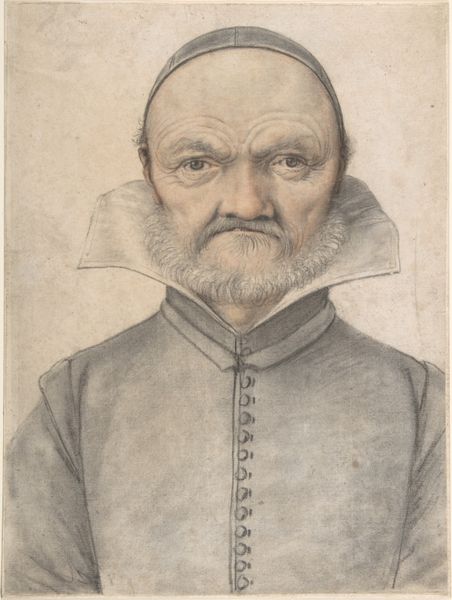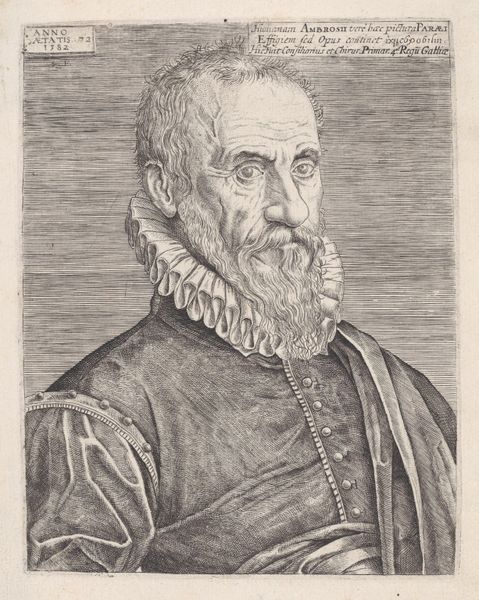
drawing, paper, pencil
#
portrait
#
drawing
#
figuration
#
paper
#
11_renaissance
#
pencil
#
northern-renaissance
#
realism
Dimensions: 9 3/4 x 6 11/16 in. (24.8 x 17 cm)
Copyright: Public Domain
This drawing, whose author is now unknown, is rendered in black chalk heightened with white on paper. We can't be sure when or where it was made, but the man's collar suggests Northern Europe, perhaps the 16th century. In this period, the institutions of art were beginning to solidify. Academies, art markets, and museums began to shape the production and reception of art, establishing standards for technique and taste. The emphasis on observation is a key part of a broad cultural movement. The gaze is direct and the features carefully described, suggesting a desire to capture the individual likeness of the sitter. The development of portraiture was closely tied to shifts in social and economic power. As the merchant class rose, so did the demand for images of individuals who wished to project an image of power. To understand it better, we might research dress codes, sumptuary laws and class structure in the early modern period. This portrait, like all works of art, reflects the social conditions in which it was made.
Comments
No comments
Be the first to comment and join the conversation on the ultimate creative platform.
